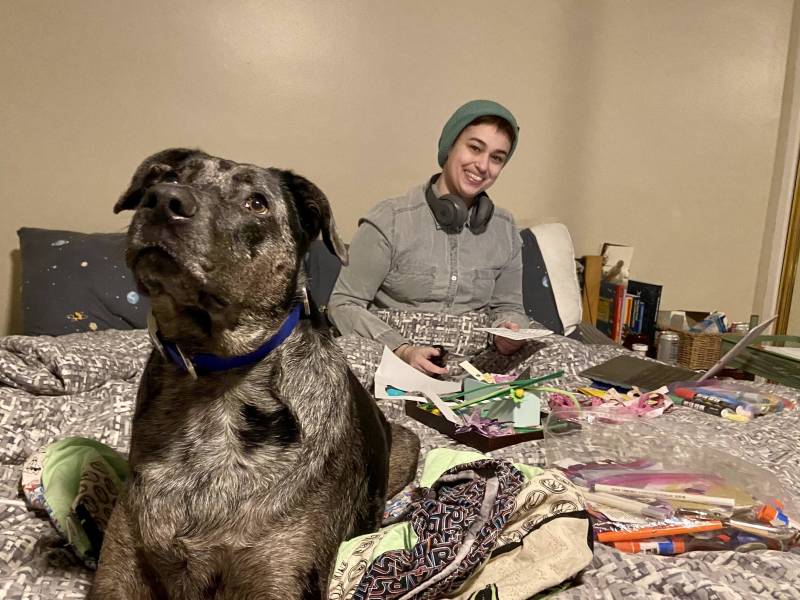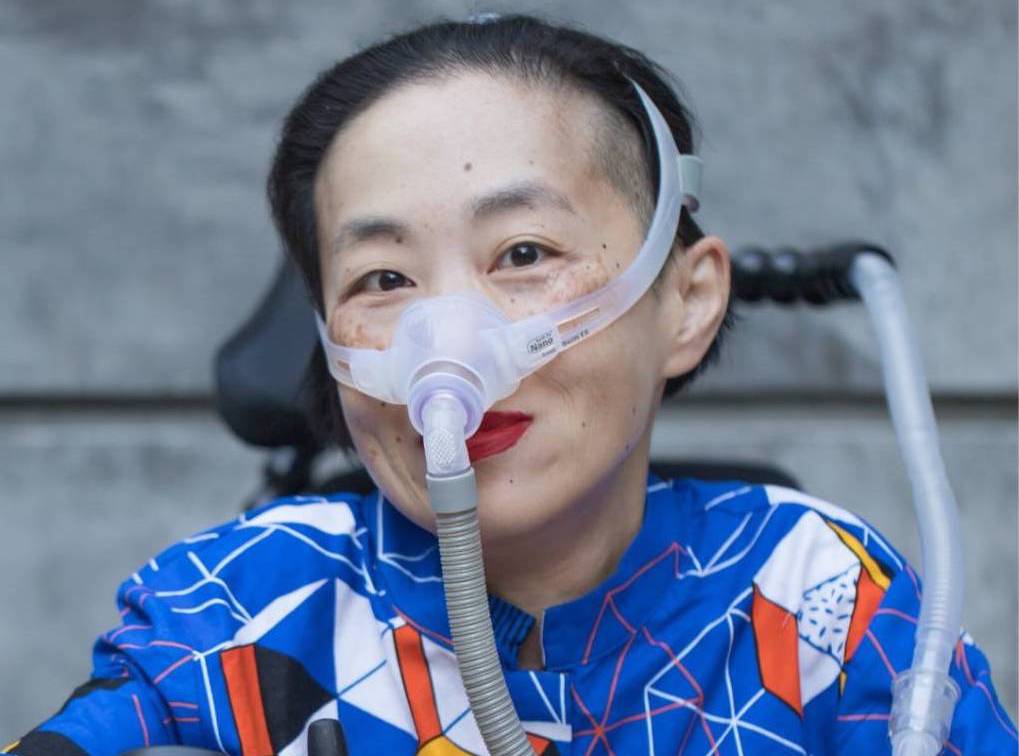On a blustery day in Los Angeles, Mimi Newman unlocks her front door to take the dogs outside. For Newman, “outside” is a relative term — she’s been in strict quarantine since March 6, 2020. She’s only gone past her front gate three times.
Newman is severely immunocompromised. To a small degree, her medical history prepared her for the pandemic.
“I have had periods of my life — years and years and years — where I had to be either in bed the whole time, or just not able to leave the house ’cause I had been so sick,” she says. “But it’s so different when anyone that could walk through the door could essentially kill you with their breath.”
So for the past year she’s been nannying a 9-year-old over Zoom, supervising cake baking and attending Morning Sing from bed. “We have done sewing. We have done making paper flowers out of tissue paper. You name it, I’ve crafted it,” she says. “I even bedazzle.”
Californians with high-risk disabilities, such as heart failure and chronic pulmonary disease, had been eligible for the COVID-19 vaccine in the state’s tier 1C. But in January, after opening tiers 1A and 1B, California joined states like Connecticut and Indiana in pivoting from a risk-based strategy to an age-based one.
After an outcry from disability advocates, in February California then announced that people ages 16-64 who are disabled or have health conditions that put them at high risk from the coronavirus would be eligible for slightly earlier vaccinations after all — but not until March 15.
Which meant Newman, who’s 31, would still have to wait.


9(MDAxOTAwOTE4MDEyMTkxMDAzNjczZDljZA004))
